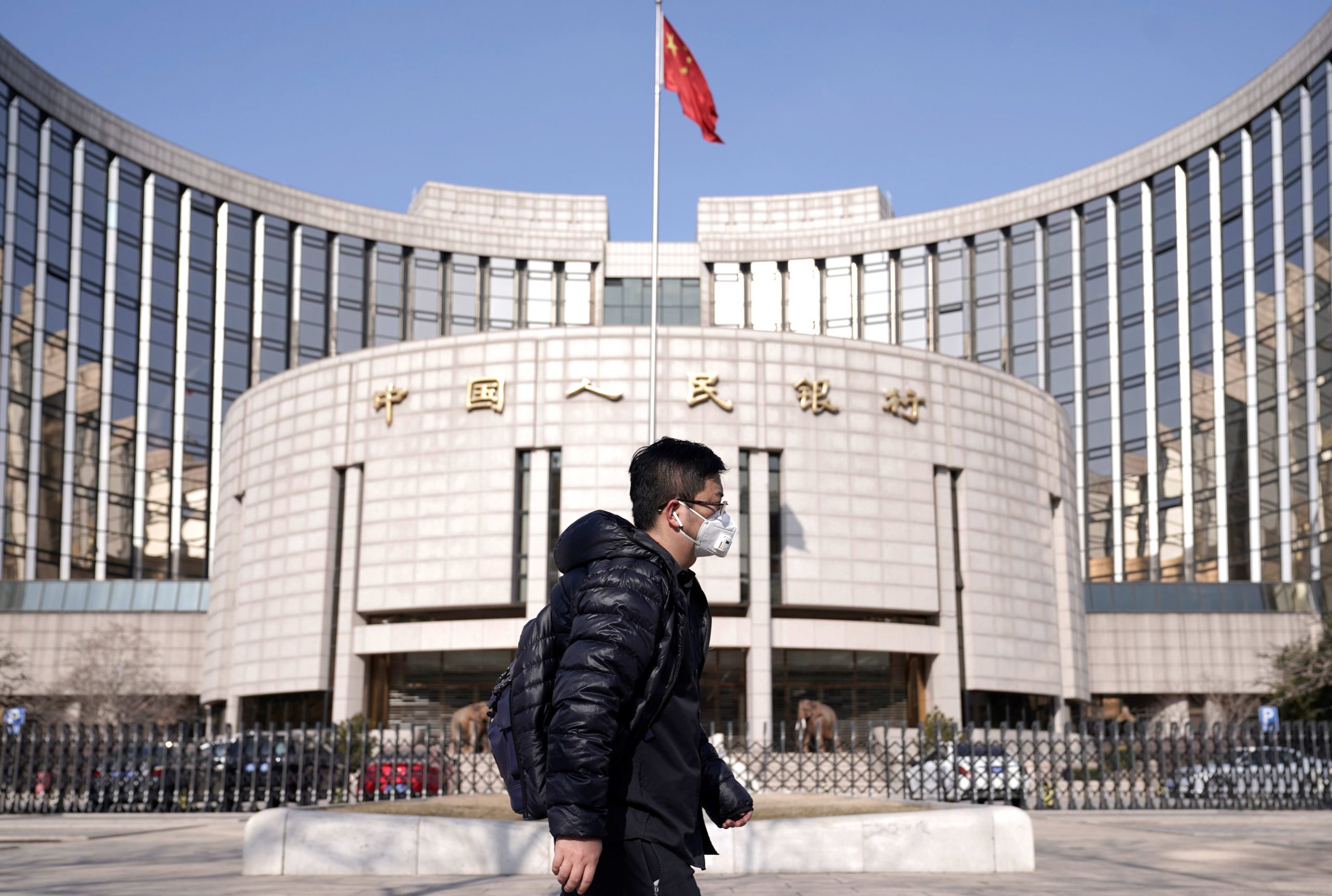A man wearing a mask walks past the headquarters of the People’s Bank of China, the central bank, in Beijing, China, as the country is hit by an outbreak of the new coronavirus, February 3, 2020.
Jason Lee | Reuters
BEIJING — China’s central bank is expected to cut key rates soon, following a directive from a meeting led by the country’s second-in-command, Premier Li Keqiang.
Li chaired an executive meeting of China’s highest administrative body, the State Council, on Tuesday.
In an announcement on Wednesday, the country’s leaders stressed the need for improving financial support for businesses hit by the new coronavirus, including lowering the reserve requirement ratio (RRR) — the amount that banks need to keep on hand.
“Without exception these calls by the Premier will be implemented by the (People’s Bank of China) almost immediately, so we expect the PBOC to announce a targeted RRR cut in the next few days, possibly before or over the coming weekend,” Ting Lu, chief China economist at Nomura, said in a note Thursday.
“We expect (the RRR cut will be) 50 (basis points) for the biggest six state-owned banks, and 100bp for other banks including joint-stock banks, city and rural commercial banks, and rural credit unions,“ Lu said.
He added that in the coming months, he expects 25 basis-point cuts each to the 1-year benchmark deposit rate and 1-year medium-lending facility (MLF) rate. The two rates are tools used by the Chinese central bank to manage liquidity in the banking system.
The new coronavirus that emerged in the city of Wuhan in late December has since killed more than 3,100 people in the country. Officially called COVID-19, the highly contagious disease has spread in the last few weeks to more than 110 countries and killed more than 1,100 people overseas. Major companies are asking employees to work from home, while many concerts and sports events worldwide have been postponed or canceled.
Worries about the economic impact of the virus, to the world’s second-largest economy and to the rest of the world, have sent global markets reeling.
Financial leaders from the G-7 major economies last week called broadly for working together to fight the coronavirus. Shortly afterward, the Federal Reserve surprised investors with its first emergency interest rate cut since the financial crisis, and the Bank of England on Wednesday became the latest central bank to cut rates in a similar emergency move.
However, these moves have not turned investor confidence around. The Dow Jones industrial average closed overnight in a bear market, down more 20% from its record close set last month.
“The Fed rate cut gives the PBOC more leeway to cut rates in China without prompting excessive capital outflows, therefore making a Chinese rate cut more likely,” Council on Foreign Relations economist Benn Steil said in an email last week.
“The PBOC, which is not independent, will not, however, ‘coordinate’ with the Fed or other central banks,” he said.
Policymakers from the People’s Bank of China have indicated rates will move lower, as investors have expected for some time. But so far, the PBOC has been relatively more conservative, compared with other central banks. Several analysts expect the State Council meeting will tip the PBOC’s hand.
“Targeted cuts in the required reserve ratio for inclusive financing will be introduced as quickly as possible, with additional cuts for joint-stock banks, to facilitate more lending support from commercial banks to micro-, small and household businesses,” the State Council meeting concluded, according to an English-language press release from the Ministry of Foreign Affairs. “Such steps will contribute to the resumption of production and lowering of financing costs.”
Currency concerns
Many analysts also say the Chinese economy will benefit more from increased fiscal support — such as more government spending or tax cuts — as well as better implementation of reduced interest rates.
“Lower rates may not help the economy much, but could fuel a small-cap stock bubble which will collapse later,” Larry Hu, chief China economist at Macquarie, said in a report released Wednesday. “If it doesn’t cut, it will take the blame for not doing enough.”
He pointed out that if the Fed — which is expected to cut rates at its meeting next week — lowers rates further, then the Chinese yuan will likely strengthen against the U.S. dollar, which is not necessarily beneficial for an economy with slowing growth.
“As such, the PBoC has to strike a middle ground,” Hu said. “It will likely continue to cut, but in a measured way. Meanwhile, it could use weak daily fixings to guide market expectation for a relatively stable currency.”
The central bank set the yuan’s daily midpoint weaker against the U.S. dollar on Thursday for a third day in a row, following seven straight days of strengthening by well over 1%, according to data from Wind Information.
The yuan traded at 6.985 versus the greenback in Hong Kong as of Thursday afternoon.


 Signal2forex.com - Best Forex robots and signals
Signal2forex.com - Best Forex robots and signals




